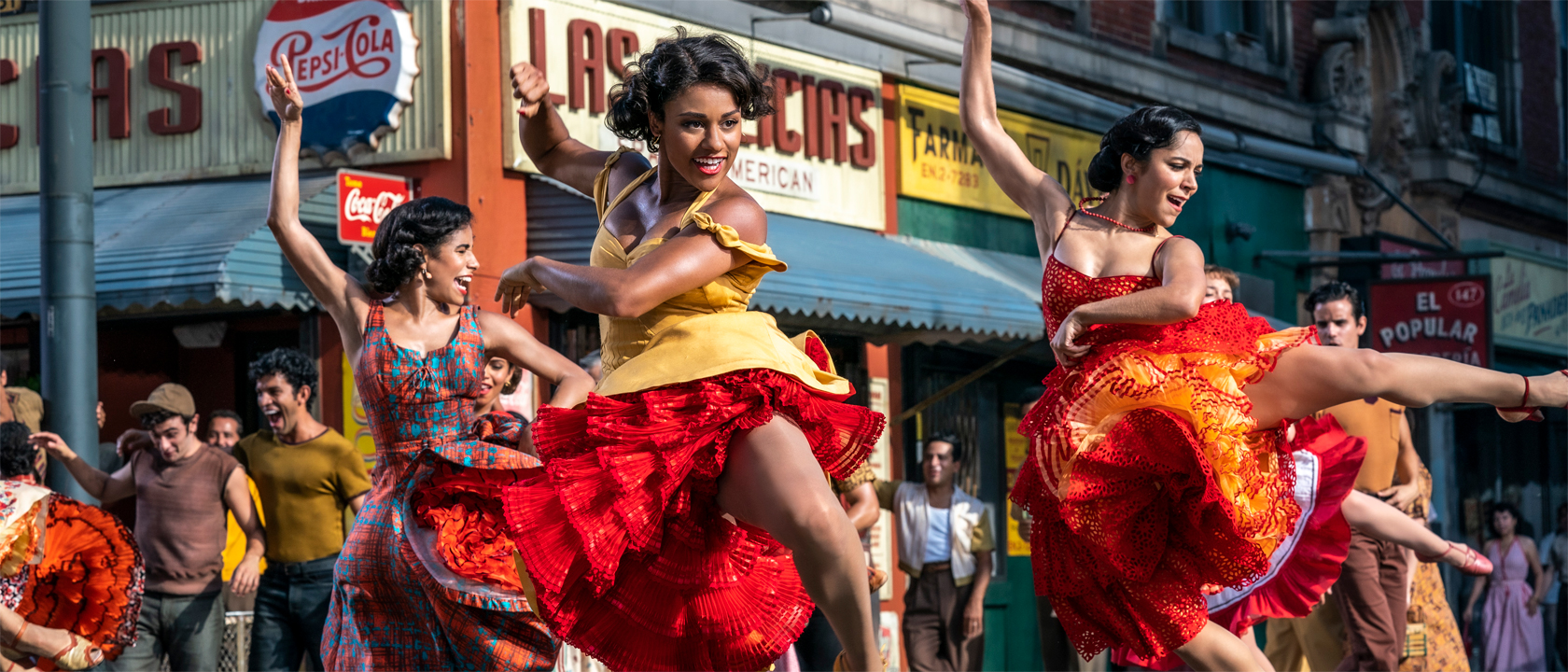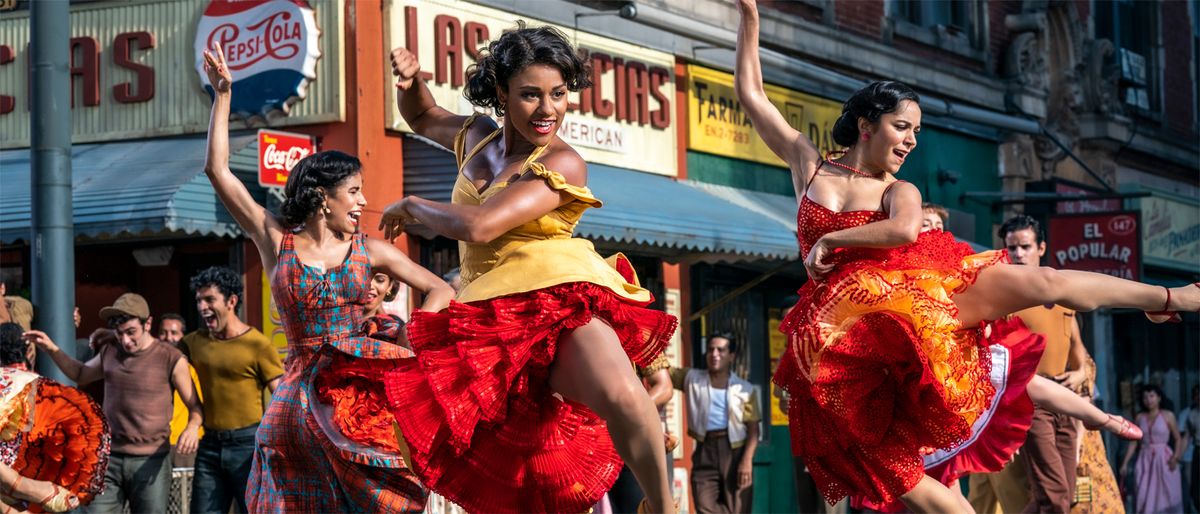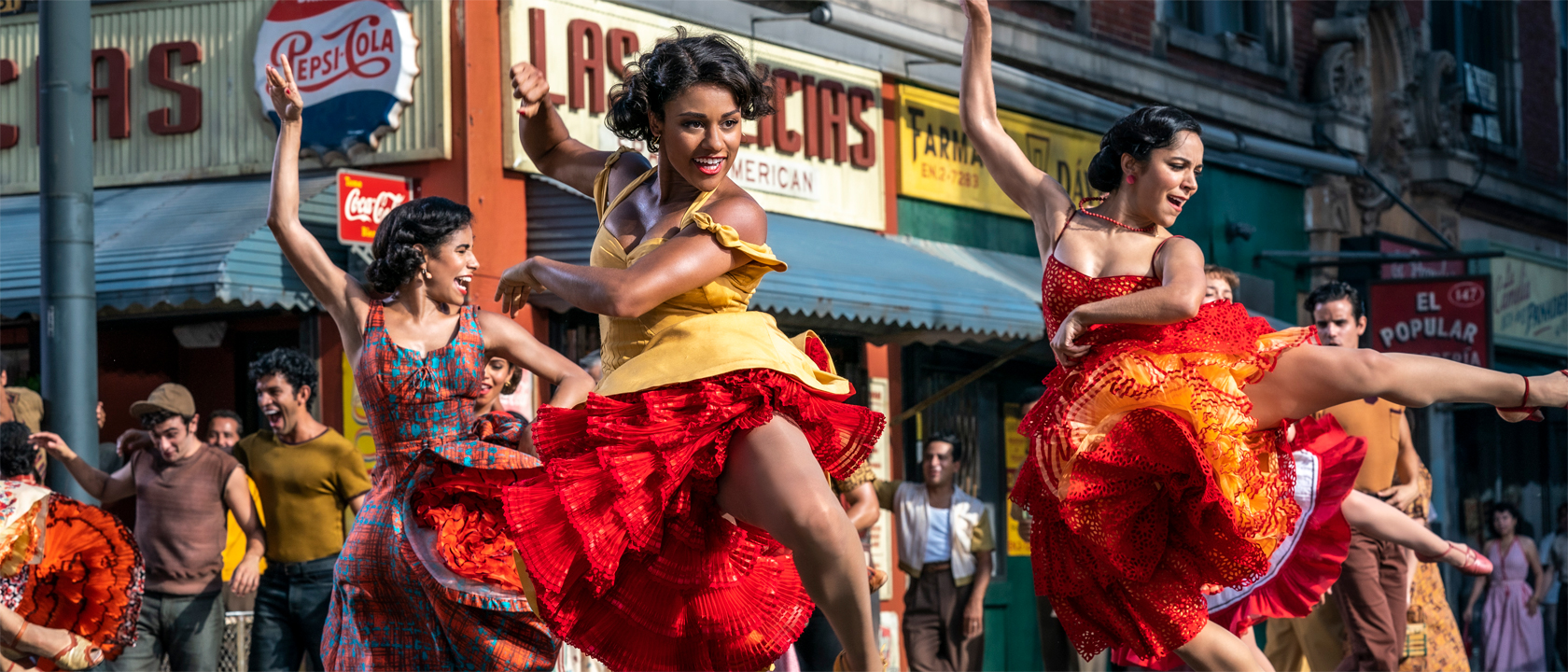

In the run-up to the release of Steven Spielberg’s West Side Story, the question as to why the filmmaker would take on the project as his 38th feature has been a legitimate one. Obviously there is the draw for him of making a massive, lavish musical – an arena he has never fully explored in his 57 year career – but at the same time the project is not only a remake, but a remake of a movie that won the Academy Award for Best Picture following its release in 1961. Spielberg is a director who has the industry power to make any film he wishes to make, so why tread on such hallowed ground just in the name of genre exploration?
This isn’t really a question that could be answered in advance of the film being screened, because as it turns out the only response necessary is the viewing experience of the new West Side Story. The basic plot remains the same as the classic 1957 Broadway musical, taking William Shakespeare’s Romeo And Juliet and transposing it into mid-1950s New York, but what’s accomplished as far as exploring the cinematic art form is utterly breathtaking. In his latest collaboration with screenwriter Tony Kushner and cinematographer Janusz Kamiński (among others), Spielberg has created one of his most spellbinding works to date, both visually and aurally – replete with spectacular sequences and an ensemble cast that is truly phenomenal… save for one outlier performance that proves to be a standout weak link in the chain.
Like its on-stage and on-screen predecessors, West Side Story begins with a turf war, as tensions rise between the Jets, a gang consisting primarily of white inner-city youth, and the Sharks, who represent the growing population of Puerto Rican immigrants in Manhattan’s Lincoln Square. As the city continues to develop and undergo urban renewal, ushering in a new age for the rich in New York, the very survival of the two groups becomes dependent on increased territoriality, and personality and racial tensions only serve to increase the heat between the two factions. The leaders of the two sides – Riff (Mike Faist) and Bernardo (David Alvarez) – are prepared for a fight to the death.
Stuck in the middle of this conflict are Maria (Rachel Zegler) and Tony (Ansel Elgort), a pair of star-crossed lovers who fall for one another at first sight during a school dance. Maria is Bernardo’s sister, and Tony is the former co-founder of the Jets now trying to live a peaceful life – having recently given up his leadership position after nearly killing a rival and completing a prison sentence. The couple quickly falls deeply in love and they make plans to run away together, but the feasibility of such an endeavor is questioned as warfare and violence looms palpable in the atmosphere.
Fearing for the people they care about and not wanting to leave before circumstances are settled, Maria and Tony work to deescalate the fraught relationship between the Jets and the Sharks, trying to convince them to call off the secret rumble that is scheduled as a final showdown between the gangs. But whether or not that is actually possible is a notion fraught with extreme doubt as the characters all barrel toward tragedy.
Steven Spielberg’s West Side Story is a stunning cinematic time machine that sometimes feels unreal in the energy it successfully captures.
When West Side Story was first imagined for the stage by Jerome Robbins, Leonard Bernstein, Stephen Sondheim, and Arthur Laurents, it was a contemporary story meant to capture an energy in 1950s America. Steven Spielberg’s vision obviously changes that perspective by maintaining the setting, rendering it a period piece, but that only serves to give it access to a whole new kind of magic. It’s not just stunning (and low-key horrifying) how relevant the social themes of the piece are when looking at what we are dealing with in our society today – particularly in regards to class warfare, policing, gentrification, and immigration – but it’s done in such a way that it doesn’t feel like a recreation. Watching the film, you wonder if Spielberg got access to time travel technology and just decided not to tell anybody about it.
The remake doesn’t shy away from what it owes to the 1961 film from directors Robert Wise and Jerome Robbins, as it carries over plenty of iconic imagery from the classic movie – but it builds on the material with a sweeping scope (accented with brilliant crane work by Janusz Kamiński) and is an utterly transportive experience. Everything from the production design to the costuming to the makeup bleeds with remarkable authenticity that pushes the present from your mind.
Rachel Zegler and Ariana DeBose are destined for incredible things in the wake of West Side Story.
One of Steven Spielberg’s genius touches in West Side Story is primarily casting his ensemble with newcomers. Not recognizing primary characters from other projects and productions serves to beautifully enhance the illusion that audiences are witnessing a window into another era. Obviously it’s a risky proposition to work with talent unproven on the big screen, but the instincts of the filmmakers prove to be phenomenal. This isn’t to say that veterans like Corey Stoll, Brian d’Arcy James and Rita Moreno don’t provide outstanding performances respectively playing Lieutenant Schrank, Officer Krupke, and Valentina (who is a reconceived iteration of the character Doc from the theatrical production/1961 movie), but it’s the fresh faces who own the film.
Ariana DeBose, who plays Anita (Maria’s best friend and Bernardo’s girlfriend), is ultimately the champion scene stealer – as she has a captivating screen presence that goes supernova during her brilliant rendition of “America” – but that in no way diminishes the female lead, as Rachel Zegler delivers a gorgeous and haunting turn as Maria that will long stick with audiences. As the two primary figures at loggerheads, Mike Faist and David Alvarez are both magnificent, and special credit must be given to Kevin Csolak, John Michael Fiumara, Jess LeProtto, Ben Cook, Myles Erlick, Patrick Higgins, and Kyle Allen as the Jets gang members who bring the house down with the “Gee, Officer Krupke” musical number.
Simply put, Ansel Elgort doesn’t get the job done as Tony in West Side Story.
Unfortunately, there is also a kind of spell-breaker in West Side Story, and his name is Ansel Elgort. The actor, best known for his turn in Edgar Wright’s Baby Driver, certainly demonstrates some wonderful vocal skills in the film, particularly in belting solo and duet numbers “Maria” and “Balcony Scene (Tonight),” but his greater presence in the ensemble feels like a wrong puzzle piece. He doesn’t merge into the movie’s magical flow like everybody else does, and it’s routinely a distraction that takes away from the character, which is a pretty big deal considering that he is the male lead. You register it as soon as he arrives in the film (which comes after a breathtaking opening sequence), and it doesn’t go away.
Achilles heel in the casting aside, the movie musical is a triumph that only a legend like Steven Spielberg could pull off, and it marks yet another impressive highlight for his iconic legacy. The ultimate answer to the question “Why would Spielberg remake West Side Story?” is “Because he can,” and watching the film you can’t help but respect that.


